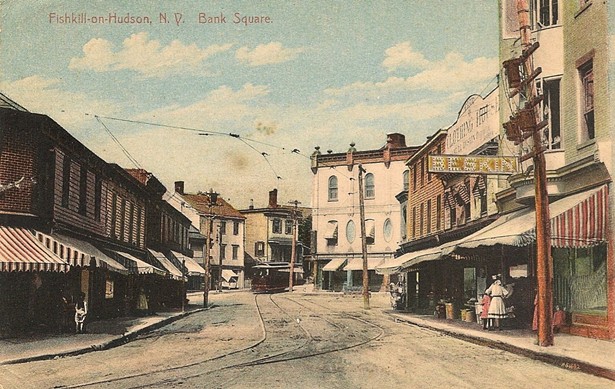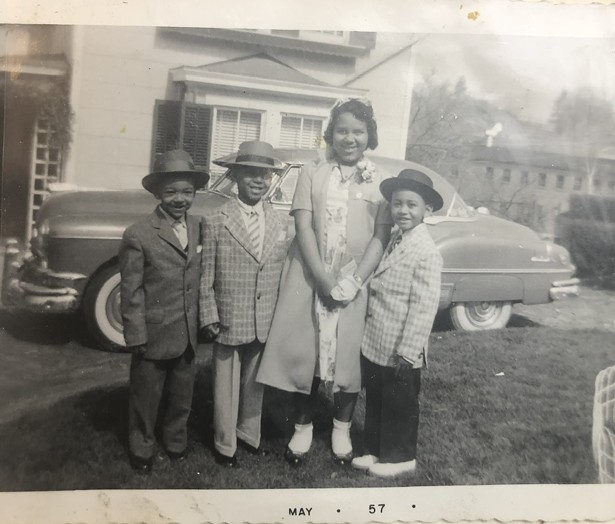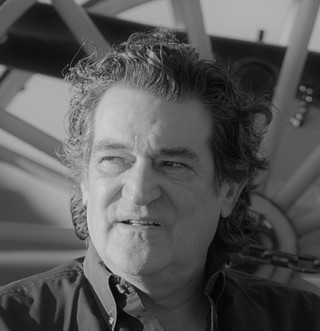Snapped in 1957, the photo shows four smiling children wearing their Easter finery, duds that would look sharp today. In the background, a fancy automobile with whitewall tires and buildings offer a rare glimpse into the people and places of Beacon’s once-thriving West End neighborhood, which succumbed to the wrecking ball in the 1960s and early ’70s.
For Connie Perdreau, the girl in the picture, the nation-wide urban renewal program that leveled her childhood dwelling and forced her mother to move across town is personal. “We had some dilapidated buildings that needed repair and also so many nice houses, but everything went,” she says. “They threw the baby out with the bathwater.”
Despite the policy’s impact and importance, no one has ever put together all the puzzle pieces to chronicle Beacon’s tumultuous experience with intrusive federal, state and local redevelopment efforts. But now, a new collaborative community project, Beacon’s West End Story, is compiling resources to tell the story. The project lays the groundwork to better understand the city’s upheaval over the grand social engineering plans, which collided with the Civil Rights movement and uprooted people’s lives—for better and worse.
History Sleuths
Things gelled last year after Perdreau posted a request on the Beacon Remembered Facebook page seeking images and artifacts from the vanished neighborhood. Only two people responded, she says. Still, the post sparked the interest of Michelle Rivas at the Howland Public Library and Diane Lapis at the Beacon Historical Society, who had long talked about teaming up to tackle a project and figured, eureka!
Along with allies, they started gathering documents, artifacts and memories. Volunteers at the Historical Society cataloged several binders’ worth of newspaper clippings in chronological order. Leonard Sparks at the Highlands Current weekly newspaper, who published an article last year about Black history in Beacon, is producing a short film and interviewing people with firsthand knowledge of past events. Oral histories are essential for detailing the story and “This is Beacon” podcast will produce a four-part series on the topic. The first installment is available on Spotify.
Brooke Simmons is a fourth-generation Beaconite whose family once lived in the West End. “There was such a tight-knit community that thrived there, it’s amazing,” she says. Speaking with relatives and others who lived through the experience, she noticed that they often mentioned the “chippy joints,” which Simmons identifies as places where teenagers sipped soda pop and danced to music from a jukebox at a nickel a song.
An exhibition at the Beacon Historical Society that opens today traces the evolution and implementation of Beacon’s urban renewal brouhaha. According to neighborhood denizen Dan Pruitt’s typed-up recollections, on display at the exhibit, “the face of the West End” consisted of “two beer gardens, Bank Square Tavern, and the Modern Café.” Locals also frequented Jimmy Johnson’s Poolroom, Mr. Lewis’s Fish & Chips and the Blue Bird Bar & Grill at 110 Beekman Street.
Another tandem exhibit, “The West End Story Project,” hosted by the Howland Public Library, opens on October 14. A panel discussion on November 14 will take place at the Springfield Baptist Church. A Community Sharing of memories will be held sometime in spring 2024.
Razing a Village
To accommodate automobiles as suburbs spread, the federal government began building the interstate highway system in the 1950s and reconfigured municipalities by providing grants to erase allegedly “blighted” areas through eminent domain.
In Beacon at the time, hat factories were beginning to close and the downtown suffered. Seduced by Washington money, the City Council approved a plan to tear down 25 percent of the city’s buildings. That never happened, but officials reshaped the mixed residential, commercial and industrial West End by widening and straightening the streets for truck traffic and creating Route 9D as a convenient conduit to the Newburgh-Beacon Bridge and I-84, which opened in 1963.

Today, brick and wood buildings on the western end of Main Street proper end abruptly at Route 9D/Wolcott Avenue. Beyond lies a sculpted, sterile streetscape that leads down to the train station and the waterfront (not unlike Urban Renewal’s effect on Kingston’s Rondout district). Most buildings were built within the last 10 years, because almost no construction took place for decades after the neighborhood disappeared.
Urban renewal’s scars are also visible along the entire mile-long stretch of Main Street, which spreads like a gap-toothed smile. The swath between the rows of brick buildings from Main Street Grocery to Melzingah Tap House on the east end and the charming cluster of historic structures from BJ’s soul food restaurant to Bank Square Coffeehouse on the west side, is punctuated by gas stations, empty lots, parking lots, and a bland architectural landscape. The Dutchess County office building replaced the historic Holland Hotel.
Scholarship on the far-reaching process of urban renewal that reshaped 90 municipalities statewide typically focuses on larger cities, especially New York City (think Robert Moses), says David Hochfelder, a history professor at SUNY Albany, who is delivering a lecture today at the Howland Public Library.
“In the smaller, overshadowed places like Beacon, Newburgh, Kingston and Poughkeepsie, it’s up to the local community to take interest in this history and bring it out into the public.”














